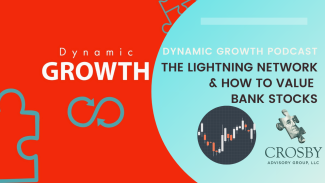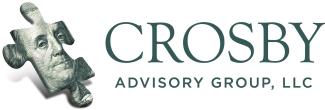
The Lightning Network, How to Value Bank Stocks?
Before getting into our topics for this week, we talked a bit about inflation and interest rates. We’ve got our calendars marked for May 11th for the next inflation numbers to be released, but the current 8.5% rate is certainly a topic of conversation for … well everyone! It may take months for the full impact of inflation and interest rates to be recognized. Remember, you control risk in the good times and the bad times. Be patient, keep studying and watching, and you’ll be ready when the tide turns.
What is the Lightning Network?
The lightning network is a second layer of technology on top of Bitcoin. It was developed in 2015 to try and solve the major critiques of Bitcoin – it has 10-minute transaction times and lacked global transactional reach. An easy way to think about the role the lightning network plays is the example of cash and gold. The primary goal of cash was to improve the monetary system and make it easier to transact between people and businesses. Sounds a lot like the role banks play – the banks are there to validate the transactions and make sure the money is exchanged.
Here are some things to know about the lightning network:
- If you want to buy something, you will use lightning network payment channels (fee associated)
- The lightning network operates like a balance sheet – a list of credits and debits – that isn’t transacted on the main Bitcoin network until the agreement is completed (think of it like you are paying a friend for something)
- A benefit of Bitcoin is its high level of security – especially if you are using cold storage. The lightning network is considered less secure because you have to be online at all times.
Why are we talking about the lightning network?
At the 2022 Bitcoin Conference, Strike announced lightning integration with point-of-sale networks. In the near future, Strike will enable digital payments at many popular consumer locations (Starbucks, anyone!?) so that means sometime in the near future you’ll be able to use Bitcoin to buy a coffee. Strike also announced that there will be minimal to no transaction fee (that’s much cheaper than a credit card). This is big news for Bitcoin owners!
What does this mean for you?
When it comes to your financial toolkit, Bitcoin is one more option that may make sense for your investment strategy and goals. Remember, everything available (ETFs, Stocks, Bonds, CDs, Life Insurance, Bitcoin, etc.) exists because it has benefit to someone and is well-suited for a specific situation. Not everything will work for everyone, but the good news is, you have options!
Tips for Evaluating Bank Stocks
Let’s move on to evaluating bank stocks – for example JP Morgan, CitiGroup, and Bank of America. Most stocks are evaluated using P/E ratios, but we caution you to use those same criteria for banks – here’s why! Earnings statements! Banks make money by lending and that is largely influenced by interest rates. They also prepare for losses – meaning they evaluate if they feel confident whether people can / cannot pay loans back. Both of those reasons can lead to a sudden increase or decrease in earnings, depending on what is happening in the market. Think about the COVID shutdown as an example – the uncertainty created a lot of unknown and led to Banks (and other industries) being overly cautious. For those reasons, we recommend you use price to book value for your evaluation. What is book value? Think about the equity in your home – it’s the difference between assets and debt.
Criteria for Evaluation
Price to Book Value is calculated by taking the price of the share and dividing by the book value per share. Price to Book Value is a more accurate way to value a bank than P/E alone.
Let’s look at four factors – shareholder equity, return on assets, efficiency ratio, and non-performing assets/loans.
- Return on equity shows us how well a company uses shareholder equity – this number should be 10% or higher. Here are the current numbers from the banks we mentioned earlier:
- Bank of America – 11.6%
- CitiGroup – 11.9%
- JP Morgan – 19%
- Return on assets is similar to return on equity but it removes the leverage portion – as a benchmark a bank should be 1% or higher.
- Efficiency ratio measures how much money a bank has to spend to make $1. Lower is better and we expect brick and mortar banks to be between 60-70%:
- Bank of America – 70%
- JP Morgan – 57%
- CitiGroup – 64%
- You may also want to take note of the non-performing assets / loans amount. This is the money that was borrowed from the bank but did not get paid back as scheduled. You want to look for a charge-off ratio of .5% or less.
In closing, banks are tough to compare but the takeaway is that you shouldn’t compare them to non-banks when evaluating. And it wouldn’t be a blog if we didn’t quote Howard Marks - remember - “Everything moves in cycles including accepted wisdom.”
Please note: This content is not a direct recommendation for investment. Investing involves risk including the potential loss of principal. Not all investments are suitable for all people. Crosby Advisory Group, LLC is a registered investment advisor in Ohio, Florida, and Texas.

